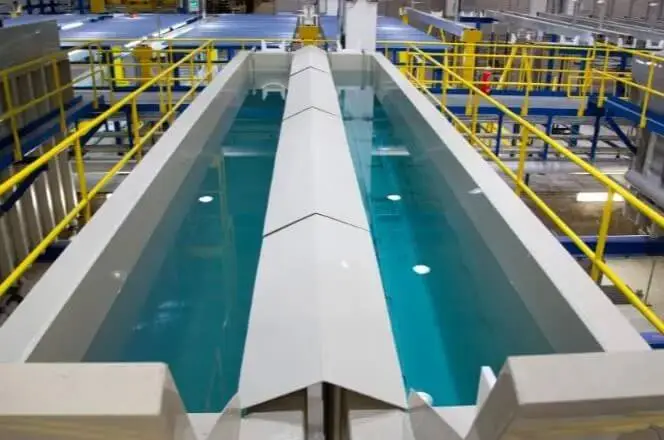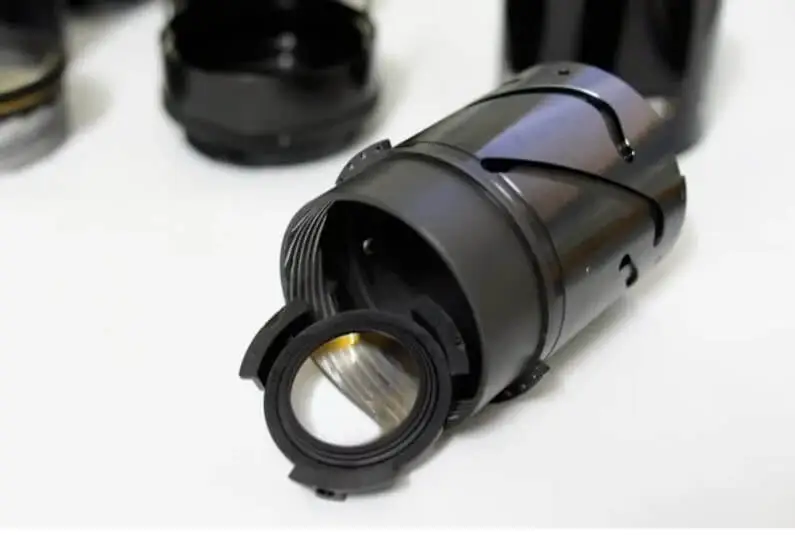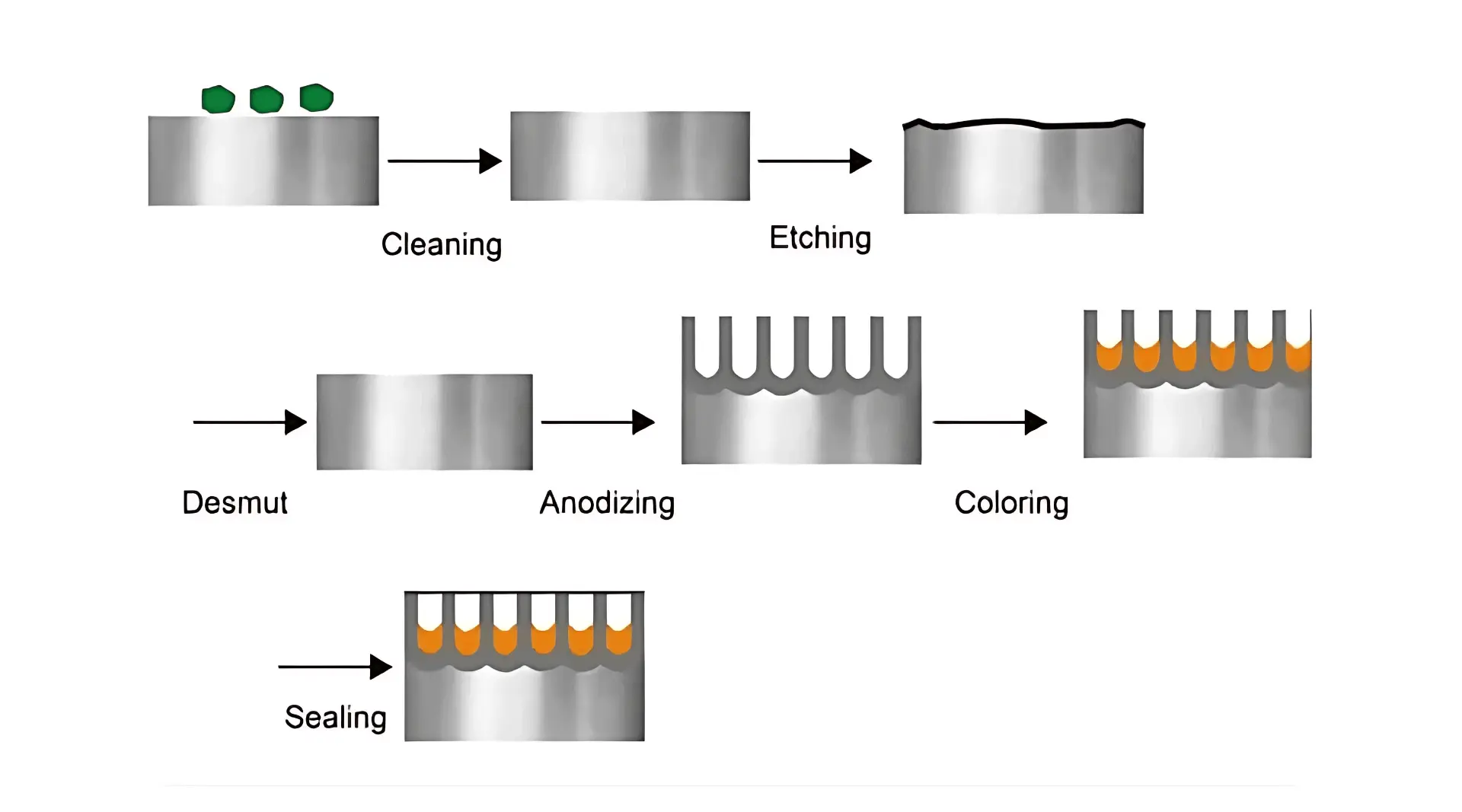Black Anodized Aluminum – Process Principles and Process Exploration
Have you ever wondered about those aluminum products with their deep, distinctive black finish? The surface treatment technology behind them is black anodized aluminum. This technology not only transforms the appearance of aluminum but also endows it with numerous superior properties. This article will take you on an in-depth exploration of the definition, process flow, advantages and disadvantages, required tools, industry applications, and more of black anodized aluminum.
Table of Contents
1.What is black anodized aluminum?
Black anodized aluminum is an electrochemical process where aluminum components are first subjected to standard anodization to form a semi-porous aluminum oxide layer, then dyed using organic dyes, inorganic dyes, or metal salts through electrolysis to achieve a uniform, smooth black surface. This process not only enhances the aesthetic appeal of aluminum but also significantly improves its durability and corrosion resistance, resulting in a hard, wear-resistant surface. It is widely used across various industries.
It is important to note that not all aluminum alloys are suitable for this process. Typically, only 5000, 6000, and 7000 series aluminum alloys can be used for black anodizing. Additionally, metals such as magnesium and titanium can also undergo similar black anodizing processes.
2.How is black anodized aluminum produced?
The complete process flow for black anodized aluminum is as follows:
(1) Pre-treatment
Cleaning: Use a strong degreaser to remove dirt, cutting fluid, or grease from the surface of the aluminum components.
Rinsing: Rinse with deionized water to ensure no residues remain on the surface.
Chemical etching: Remove the naturally formed oxide layer to achieve a more uniform anodizing effect.
Rinse again: Thoroughly rinse the components to prevent etching solution residue.
(2) Anodizing (forming the aluminum oxide layer)
Immerse the aluminum components in an acidic electrolyte tank and apply an electric current, with aluminum serving as the anode.
During electrolysis, oxygen ions react with the aluminum surface to form a semi-porous aluminum oxide layer that is tightly bonded to the substrate.
Process parameters (temperature, voltage, time) can control the thickness and performance of the oxide layer.
Select different types of anodizing processes based on application requirements:
• Type I (chromic acid anodizing):
Type I anodizing, also known as chromic acid anodizing, uses a chromic acid electrolyte. This process is suitable for applications requiring a thin, corrosion-resistant coating layer, but it has inferior surface wear resistance and color depth compared to Types II and III, and is not suitable for deep black treatment.
• Type II (sulfuric acid anodizing):
Type II anodizing, also known as sulfuric acid anodizing, is the most common type, producing a thicker and more durable oxide layer than Type I. This process uses a sulfuric acid electrolyte, making the surface more wear-resistant and corrosion-resistant, and can produce various colors, including black, depending on the dye.
• Type III (hard anodizing):
Type III anodizing, also known as hard anodizing, produces a thicker and more durable oxide layer than Type II. This process uses higher current density and lower temperature to achieve a more complex and wear-resistant surface, suitable for applications requiring extremely high durability and corrosion resistance.
(3) Dyeing (Achieving Black Color)
Dye is injected into the semi-porous structure formed during anodizing to achieve a black appearance.
Dyeing methods include:
• Electrolytic dyeing:
This method involves immersing the anodized aluminum components in another electrolytic tank containing heavy metal salts and stainless steel electrodes. These metal salts can react with tin, nickel, or cobalt. The aluminum components act as the cathode in this tank, and when electricity is applied, the metal salts deposit into the pores of the oxide layer. Electrolytic dyeing produces components with excellent color fastness.
• Inorganic dyeing:
This dyeing method uses water-insoluble pigments, offering very high color fastness. Commonly used inorganic salts such as cobalt sulfide can make the color of black anodized aluminum components durable and resistant to fading, making them suitable for products requiring long-term durability.
• Organic dyeing:
Water-soluble organic dyes are used, first dissolved in warm water and then added to the dye solution. When aluminum parts are immersed in the dye solution, the dye penetrates into the semi-porous oxide layer. The darker the color, the longer the immersion time required, making it suitable for applications with diverse color requirements.
(4) Sealing (color fixation and enhanced durability)
The dyed aluminum components are placed in boiling water, steam, or nickel acetate solution to close the pores of the aluminum oxide layer.
This step locks in the dye, prevents fading, and enhances the coating’s hardness, wear resistance, and corrosion resistance.
(5) Final Inspection
The color uniformity, surface finish, and coating thickness are inspected.
Ensure that its performance meets the corrosion resistance, wear resistance, and aesthetic requirements of the application industry.
3.Advantages and Disadvantages of Black Anodized Aluminum
The advantages of black anodizing primarily lie in its enhanced corrosion resistance and wear resistance compared to standard anodizing, while also featuring the following notable characteristics:
High thermal emissivity:
After being dyed black, aluminum components exhibit significantly improved thermal emissivity, making them suitable for devices requiring efficient thermal management, such as heat sinks and satellites.
No gas release:
Properly sealed black anodized components do not release gases in a vacuum environment, a critical feature for protecting sensitive equipment, particularly space-related devices.
Excellent color fastness:
Especially when dyed with inorganic or metal salts, black anodized aluminum components maintain color stability under prolonged UV exposure, preventing fading.
Enhanced corrosion resistance and wear resistance:
The black anodized layer further enhances corrosion resistance and wear resistance on top of the protective aluminum substrate, extending service life.
Good thermal stability and mechanical strength:
Aluminum treated with anodizing is heat-resistant and has increased hardness, effectively resisting scratches and impacts.
However, black anodizing also has certain limitations:
Surface cracking:
During thermal cycling, due to differences in thermal expansion coefficients between the base material and the anodized layer, the coating may develop cracks, affecting appearance and performance.
Material restrictions:
Black anodizing is only applicable to certain aluminum alloy series, primarily 5-series, 6-series, and 7-series aluminum alloys, with 6-series aluminum being the most commonly used. Other aluminum alloys are not suitable for this process.
Risk of color fading:
If organic dyes are used for coloring, the black anodized layer is prone to fading under ultraviolet light, affecting aesthetics and performance.
Higher cost:
Compared to standard anodizing and other surface treatment methods, high-quality black anodizing has a higher production cost.
In summary, black anodized aluminum excels in improving the performance and visual effects of aluminum, but there are still trade-offs in terms of material applicability and durability. In addition, it should be noted that anodized aluminum is generally not conductive.
4.What tools are required for black anodizing?
The tools required for black anodizing primarily include the following categories:
Sulfuric acid electrolyte: This is the basic electrolyte used to form the oxide film during the anodizing process.
Acid-resistant containers: Used to hold the electrolyte, ensuring corrosion resistance and safety during the process.
Cathode: The electrode opposite the anode during electrolysis, typically made of corrosion-resistant materials such as stainless steel.
DC power supply: Provides a stable DC current to facilitate the anodizing reaction.
Conductive suspension wires: Used to suspend and connect aluminum components, ensuring smooth current conduction.
Degreaser: Used before or after the process to clean oils and impurities from the aluminum surface.
Dye bath and dye: A dye bath containing appropriate dye used to color anodized aluminum parts, achieving a black finish.

These tools are indispensable and collectively ensure the success of the black anodizing process and the quality of the aluminum part’s surface. Xavier offers extensive manufacturing capabilities and other services, including black anodizing treatment, to meet all your prototype design and production needs.
5.Industry Applications of Black Anodized Aluminum Products
Black anodized aluminum, known for its lightweight, high strength, and excellent corrosion resistance, is widely used in the aerospace and automotive industries. It is commonly used to manufacture brackets, fasteners, and decorative components, enhancing part durability and visual appeal while meeting stringent performance and aesthetic requirements.
In the consumer electronics and home appliance sectors, black anodized aluminum is an ideal choice for its modern and stylish appearance. Products such as smartphones, laptops, and kitchen appliances utilize this material to not only enhance visual appeal but also improve durability and performance.
Sports equipment and outdoor gear also extensively utilize black anodized aluminum, such as bicycles, camping gear, and firearms. Its corrosion resistance, durability, and lightweight properties enable it to effectively withstand harsh outdoor environments, extending equipment lifespan and reliability.
Additionally, black anodized aluminum is suitable for special applications requiring black coating functionality. For example, satellite components use this coating to more effectively radiate heat back into space, optimizing thermal management; optical equipment relies on the black coating to absorb stray reflected light, improving imaging quality; and architectural decoration leverages its deep black aesthetic appeal and excellent color fastness, with its smooth surface also enhancing wear resistance.

Overall, black anodized aluminum not only retains the advantages of standard anodized aluminum but also offers additional benefits from the black coating.
We have provided a detailed introduction to the definition, processing procedures, advantages and disadvantages, tools used, and industry applications of black anodized aluminum. We believe you now have a basic understanding of this process. If you wish to obtain more professional content and answers, please continue reading the following sections.
6.In-Depth Exploration of Black Anodized Aluminum
● What are the differences between black anodizing and other surface treatments such as spray/powder coating and PVD? Which is more suitable for your products?
Compared to spray coating/powder coating, PVD, and other surface treatments, black anodizing has the following differences:
Anodizing involves generating an oxide film on the metal surface through an electrochemical reaction. The film layer is tightly bonded to the metal substrate, offering excellent adhesion, wear resistance, and corrosion resistance. Additionally, the film layer is thin, making it suitable for applications where maintaining part dimensions and thermal conductivity is essential.
Spray coating and powder coating involve applying a coating to the metal surface. The coating is thicker, offering more color options and better coverage, but adhesion depends on the primer, and thickness can affect part dimensions.
PVD (Physical Vapor Deposition) is a technology that forms a wear-resistant coating with a metallic luster on the metal surface, but it is more expensive.
The choice of process depends on specific requirements: if lightweight, corrosion resistance, and metallic texture are priorities, anodizing is more suitable; if thick coatings, rich colors, or special textures are needed, spray coating or powder coating is a better option.
● How stable is the color of black anodized aluminum, and how does it perform in terms of lightfastness and weather resistance? How can these properties be improved?
The color stability of black anodized aluminum primarily depends on the dyeing method.
Organic dyes, though vibrant in color, tend to fade under prolonged sunlight exposure or high-temperature environments. In contrast, electrolytic dyeing (using inorganic dyes or metal salts) offers better lightfastness and abrasion resistance, resulting in superior color stability.
To enhance colorfastness, it is recommended to use electrolytic dyeing combined with proper sealing processes (such as thermal sealing or chemical sealing) to prevent dye loss.
● Do different aluminum alloys exhibit different performance during black anodizing? Which alloys are more suitable?
Different aluminum alloys indeed exhibit varying performance during black anodizing. This is primarily due to differences in the content of elements such as copper, silicon, zinc, and magnesium within the alloy, which influence the growth rate of the oxide film, pore structure, and dyeing uniformity.
6061 aluminum alloy, with its stable composition and good processability, is frequently used for anodizing treatment of decorative and structural components;
7075 aluminum alloy has higher strength, but its dyeing uniformity and corrosion resistance depend more on precise process control. When selecting materials, it is essential to consider both the functional requirements of the parts and the subsequent processing methods.
● What is the thickness range of the oxide film after black anodizing aluminum parts? What is the difference between “hard anodizing (hard film)” and “ordinary anodizing”?
The film thickness after black anodizing typically ranges from 5 to 25 microns, primarily used for decorative and dyeing purposes. Hard anodizing (hard anodized oxide film) refers to a thicker, more densely structured oxide film, with thicknesses reaching tens or even hundreds of microns, offering better wear resistance but lower porosity, making dyeing more challenging and increasing process costs.
Ordinary anodized coatings are thinner, with pores suitable for dyeing. Therefore, black anodizing typically uses thinner coatings to ensure dye penetration and coloring.
● What are the common defects in black anodizing? How can they be avoided?
Common defects in black anodized aluminum include uneven color or mottling, bubbles and pores, coating peeling, and surface scratches.
Uneven color or mottling is often caused by inadequate surface cleaning or variations in the local composition of the aluminum alloy; bubbles and pores are typically due to incomplete cleaning or degreasing; peeling may result from poor sealing processes or improper substrate preparation; and scratches are often caused by the fragility of the film layer.
The key to avoiding these issues lies in strict cleaning and degreasing, controlling current and temperature uniformity, selecting appropriate dyeing and sealing processes, protecting critical areas during production, and conducting post-production inspections. Conducting small-batch samples and salt spray, friction, and lightfastness tests prior to production can help identify issues promptly and reduce risks.
● Which is more cost-effective: black anodized aluminum or colored anodized aluminum?
The cost comparison between black anodized aluminum and colored anodized aluminum primarily depends on the dyeing process and dye type. Generally, black anodizing uses inorganic dyes and metal salt electrolytic dyeing, which offers high colorfastness and process stability, resulting in relatively lower costs. However, some vibrant or special colors may require more complex or multi-step dyeing processes, leading to higher costs. If the dyes used in colored anodizing are more common, the cost difference will not be significant.
7.Summary
In summary, black anodized aluminum stands out in the metal industry for its exceptional durability, aesthetic appeal, and longevity. If you are considering using this material in your next project, it is essential to thoroughly understand its advantages and disadvantages. Are you ready to unlock the endless possibilities of black anodized aluminum? Contact a professional manufacturer today to turn your ideas into reality.
